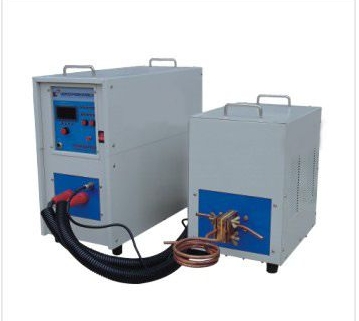- 08
- Dec
Operation mode of quenching equipment for machine tool rails
Operation mode of imenyụ ngwá for machine tool rails
The machine tool guide rail quenching equipment adopts the continuous quenching method. The commonly used machine tool structure can be divided into two types of structure: machine bed movement or sensor movement. Need to move, when the transformer/inductor is used to move, the quenching bed does not need to be moved, the parts are fixed and installed, and the area is small. The cable and cooling waterway need to be moved with the transformer. Due to the integrated design structure of the transformer and the capacitor bank, the cable moves Will not increase power output loss.
When we use the inductor moving structure for quenching, the bed of the machine tool is fixed, and the inductor moves along the quenching direction of the guide rail to perform continuous quenching. Considering the quenching of the two sides of the guide rail and the advance and retreat movement of the inductor, the quenching transformer should have With the functions of lateral movement and up and down movement, when one rail is quenched, the inductor automatically moves to the other rail for continuous induction hardening, thereby completing the entire quenching process.
Operation of ultra-audio frequency quenching equipment for machine tool (bed) guide rails:
1. Nke mbụ, tinye bọtịnụ niile na panel panel na ọnọdụ dị na ya.
2. Enwere ike ịmegharị eriri ngbanwe ike na etiti etiti mbụ.
3. A na-edozi ngwá ọrụ ahụ n’otu njedebe nke workpiece (akwa), na inductor na-ejikọta ya na elu nkwụsị. Ọ bụrụ na ihe mmetụta sprays mmiri n’aka ekpe, ihe mmetụta na-akpali n’aka ekpe ọgwụgwụ nke workpiece, na ngwá na-akpali n’aka nri maka quenching. Ọ bụrụ na ịgba ntụziaka nke ihe mmetụta dị n’aka nri, ihe mmetụta ahụ ga-aga n’akụkụ aka nri nke workpiece ma si na njedebe aka nri gaa n’aka ekpe maka ịkwụsị.
4. Emechaala nkwadebe ahụ, gbanye ọkụ na-agba mmiri, wee pịa bọtịnụ kpo oku ka ịmalite ikpo ọkụ. Wee pịa bọtịnụ azụ azụ ma ọ bụ aka ekpe ka ibugharịa ngwaọrụ ahụ.
5. Lelee okpomọkụ okpomọkụ. Mgbe ọnọdụ okpomọkụ dị ala, ị nwere ike jiri nwayọọ nwayọọ gbanwee mkpịsị ọkụ ka ọ bụrụ okpomọkụ kwesịrị ekwesị.
6. Mgbe enweghi ike iru okpomọkụ na-ekpo ọkụ mgbe a na-edozi ike na oke elu, a ghaghị ibelata ọsọ ọsọ ogologo oge.
7. Gbanyụọ ike mgbe emechara.

